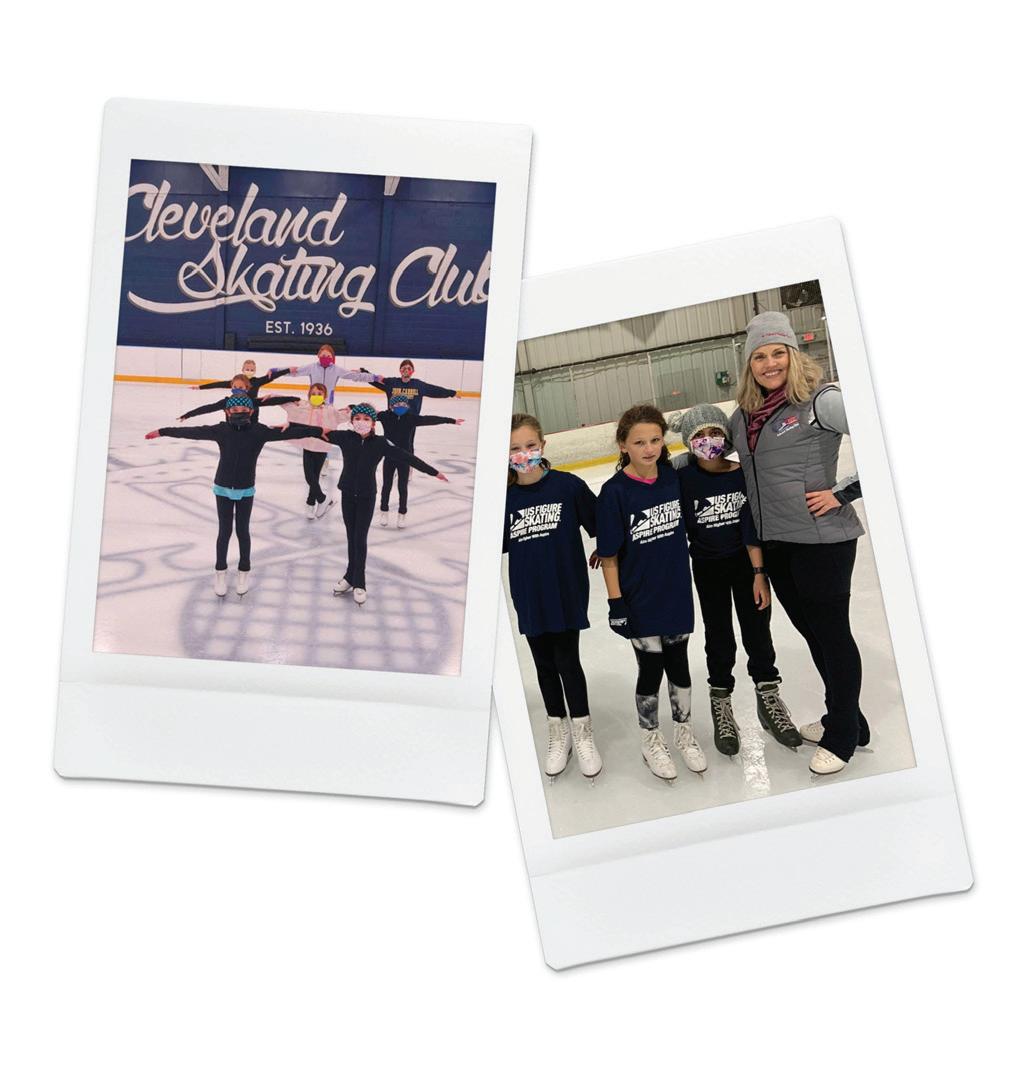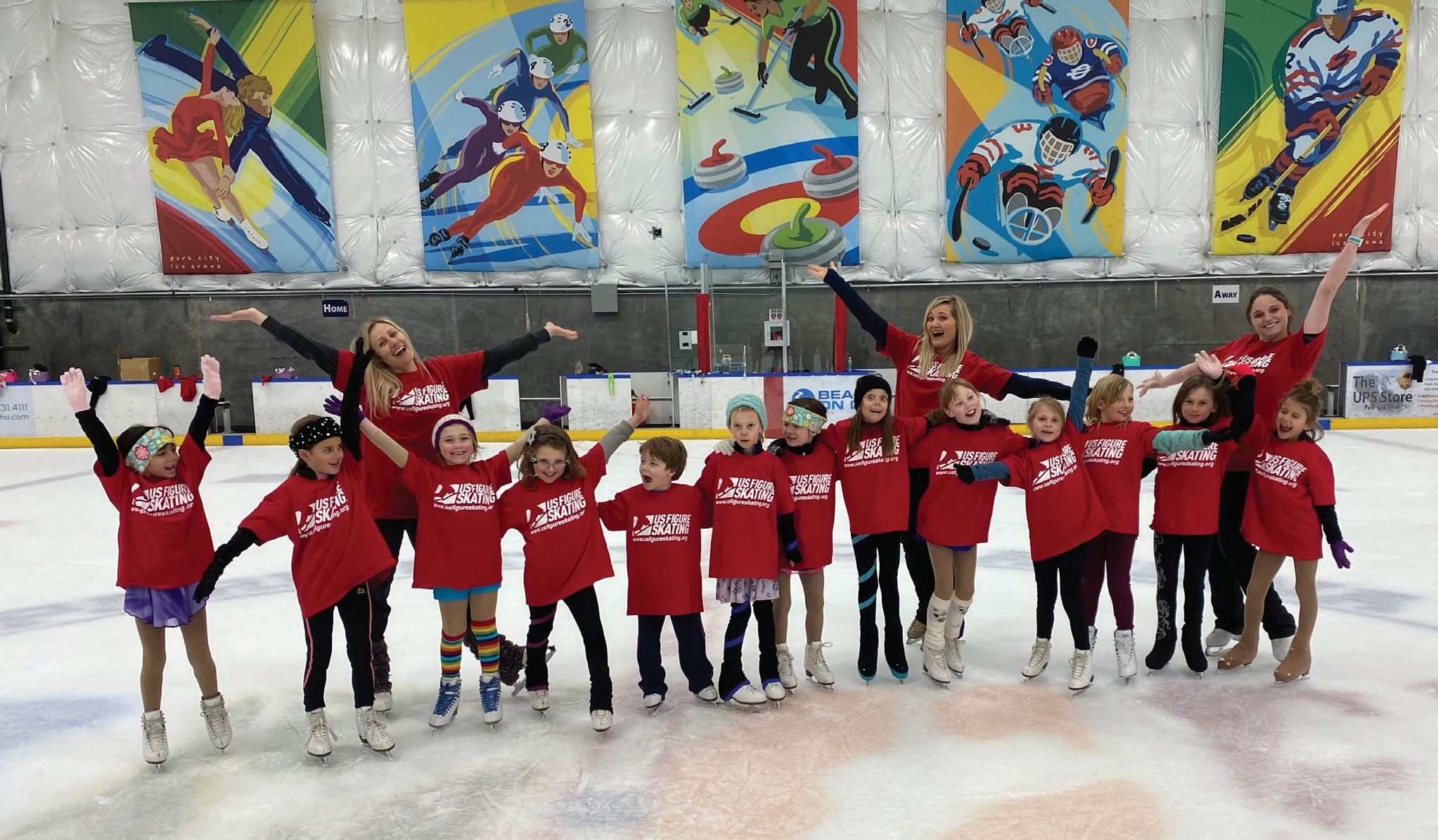
4 minute read
Clubs and Coaches Working Together
BY SUSI WEHRLI MCLAUGHLIN & PATRICK O’NEIL
All clubs are charged with the responsibility of creating a safe environment for all members in which they can participate, develop their skills, and achieve their goals. Coaches have a direct responsibility to ensure the success of a club and rink programing. Clubs and coaches that plan and use their creativity together can overcome many challenges, and it’s especially vital in facing today’s additional challenges.
Advertisement
Boards and coaches that actively engage in planning set high standards and help to develop new resources so that they can move their clubs into brighter futures. Complacent boards and coaches that rely on “but that’s the way we’ve always done it” are, quite honestly, having trouble keeping up, especially during this time. Thinking outside the box has never been more important.

Park City Aspire Pilot Program
Running a figure skating club and your work as a coach is very much like running a small business. Most of the principles necessary to make a business successful also apply to making a club and coach successful. A strong club is a direct result of the quality of professional coaches and instructors working within the club. When each entity works toward the same goal of being the best they can be in their role, everyone wins, especially the skaters. Coaches wear many hats, often at the same time: advisor, assessor, counselor, demonstrator, facilitator, fact finder, mentor, motivator, organizer, planner, role model, and supporter. As such, you have so much to give.
Join the Club Board
If you are saying to yourself, “I wish my club was more (fill in the blank),” you have the power to make this a reality by getting involved. According to U.S. Figure Skating rules, coaches may serve on a club board; however, coaches may not constitute a majority of the board. Every club creates their own rules, so please always refer to your own club’s bylaws on who can serve on the board.
Form a Coaches Committee
Another idea is to form a coaches committee with a coach liaison that can either be a voting or non-voting member and will attend board meetings representing the coaches. The coach liaison is responsible for seeking feedback from the coaches, sharing ideas, and communicating any concerns with the board. This two-way dialogue is extremely helpful with creating new programming and meeting the current needs of the membership. It is also important that when decisions are made, the entire coaching staff support the programs, events and activities of the club.

Aspire Synchro in Cleveland, SC and Colonial Skating Club in PA.
Get Involved in Strategic Planning
Coaches should also be involved in the strategic planning process of the club. Together, you can evaluate the current state of the club, create the yearly calendar of events and help set realistic goals. Filling out a SWOT analysis (strengths, weaknesses, opportunities and threats) is an easy and quick exercise to get everyone thinking. It helps you to build on what you do well, addresses what the club is lacking and provides the greatest chances for success. This could become an enjoyable annual team building event between the board and the coaches to first set and then evaluate progress year over year, redefining goals as you go.
Set Positive Examples
Creating and maintaining a positive atmosphere is the responsibility of the collective leadership of the club: board and coaching staff combined and working together. Healthy rink cultures are full of energy, productivity and collaboration, whereas unhealthy cultures produce negative, low energy and gossip-filled rinks. As leaders, coaches should set the best tone possible and help deter- mine the culture and direction of the club. Take a minute and rate the culture of your club on a scale of 1-10 (10 being the best) and think about why you are giving it that score. If you rate it a 7 or less, it is time to take a much closer look at the determining factors behind the number and identifying ways to improve it.
Getting Involved
As coaches, you inherently have the knowledge and experience to help your club succeed. The best way to create the future club you want is to first get involved and become part of the solution and success.
Many of the responsibilities listed below are interchangeable between board members and coaches.
Ten Responsibilities of a Figure Skating Club Board
1. Advance the club’s mission. Each individual board member should fully understand and support it.
2. Ensure coach representation to the board. This person can either be an advisor or a board member.
3. Support the coaching staff. The board should ensure that the coaches have the professional support they need to further the goals of the club.
4. Ensure effective club planning. As stewards of the club, boards must actively work with the coaches to establish an overall plan and assist in implementing the strategic goals.
5. Ensure adequate resources. One of the board’s foremost responsibilities is to provide the club with adequate resources to fulfill its mission.
6. Manage resources effectively. The board must remain accountable to its members. To safeguard its tax-exempt status, it must assist in developing the annual budget and ensuring that proper financial controls are in place.
7. Determine, monitor and strengthen the club’s programs and services. The board’s role in this area is to determine which programs are the most consistent with the club’s mission and to monitor their effectiveness.
8. Enhance the club’s public standing and reputation.
9. Ensure legal and ethical integrity. Solid policies will help ensure proper decorum in this area. The board must establish pertinent policies, abide by the SafeSport Program and adhere to provisions of the club’s bylaws and articles of incorporation.
10. Recruit and orient new board members and assess board performance.









